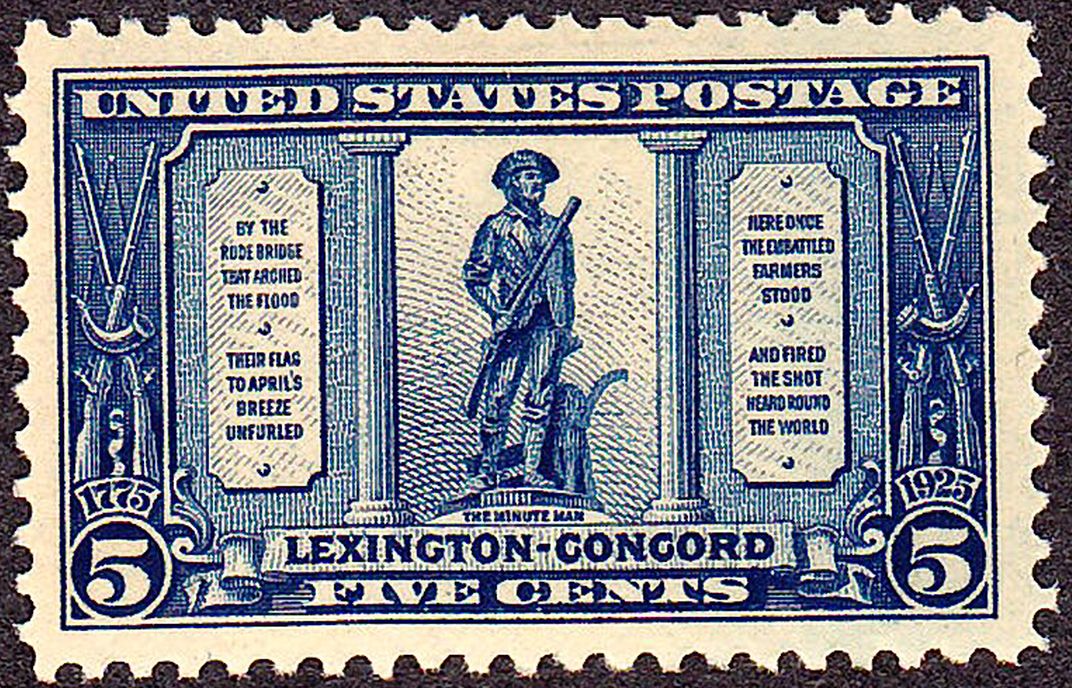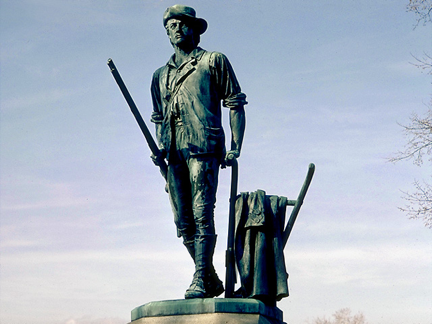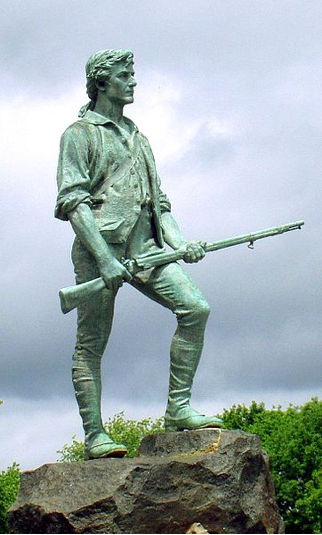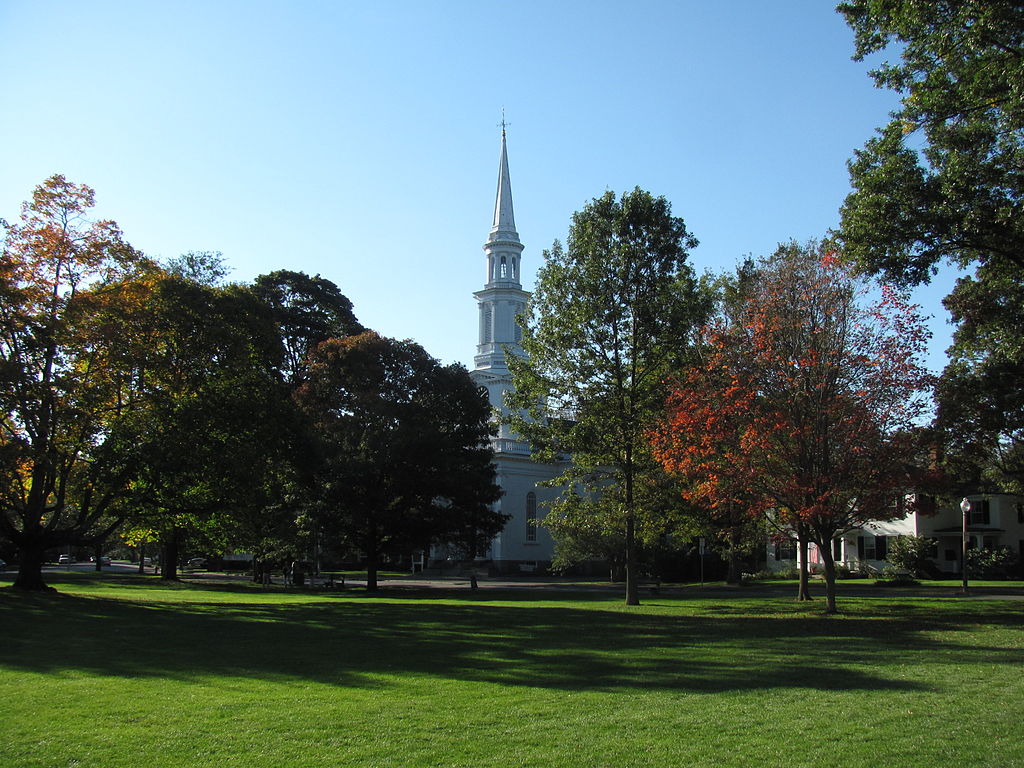April 19, 2015 marks 240 years since the bloodshed that ignited the American Revolutionary War and the birth of the United States. The violence started at Lexington, continued at Concord, and carried on along the “Battle Road.”
In 1837, Ralph Waldo Emerson, provided what has become the enduring description of the Revolutionary War when he called it “the shot heard round the world” in his “Concord Hymn.” While the military skirmish didn’t last long, the fight over its meaning continued for a good deal longer.
 |
| This stamp features the first stanza of Ralph Waldo Emerson's "Concord Hymn." |
Almost immediately after the musket smoke had cleared, leaders of the Patriot movement in Massachusetts recognized that the fighting in Lexington and Concord had tremendous propaganda potential provided it was positioned properly.
If Massachusetts men were seen as aggressors against the British they would lose the support of other colonists and an audience in England. Massachusetts leaders thus collected accounts from participants and published them in both America and England. These accounts painted the British Redcoats as brutal aggressors, attacking civilians and destroying private property.
In fact, as far as we can tell, the British troops, for the first part of the day, largely obeyed their orders to respect civilians and private property and only destroy the American stockpile of military supplies at Concord.
But as the exhausted Redcoats were pursued back to Boston, taking fire from all directions, including from inside and behind houses, they had a hard time distinguishing non-combatants from the militia-men who were shooting at them—a problem that has also frustrated soldiers across the world in numerous conflicts in the last two and half centuries.
Scared and outraged, the British were unprepared for this kind of warfare, which violated 18th century military rules, and they lashed out indiscriminately.
It was great fodder for the Patriot publicity effort. And they succeeded in getting their version of events to the London press before the official British report submitted by General Thomas Gage.
By charging the Redcoats with unprovoked aggression, the Patriots of 1775 justified their war against Britain and set a powerful precedent for how the United States has rationalized subsequent military actions.
Wars have complex origins, but many times over the last 240 years American leaders have professed the need for the nation to go to war in defense against unprovoked attacks and threats. America’s entry into World War II in the wake of the Japanese attack on Pearl Harbor is a classic example—President Franklin D. Roosevelt had wanted to join the Allies but could not garner popular support until then.
 |
 |
| The Minute Man, Concord by Daniel Chester French; The Lexington Minuteman by Henry Hudson Kitson | |
In the 19th century, since there was a great deal of ambiguity about what happened on that fateful day, the towns of Lexington and Concord fought with each other over the claim to be the place where Americans first fired in anger at the British. Both towns erected their own statues to honor the “Minuteman.” Concord put up their statue in 1874 in time for the Centennial. Lexington followed with its own in 1900. Both statues cater to a myth: each depicts a soldier standing alone. In reality, those who fought that day did so together as members of their communities.
Yet, the lone warrior defending justice and freedom continues as an enduring American myth. From 2001 to 2006, the recruiting slogan of the United States Army, for example, was, “An Army of One,” despite the fact that teamwork is vital to military success.
So, who fired the first shot that April morning? Theories abound. The idea that Sam Adams and John Hancock actively conspired to start the fighting is largely discounted by scholars. Those on both sides were nervous, uncertain, and tired. Some of the Americans were likely inebriated.
 |
| Lexington Green, Massachusetts photographed in the present day. |
Eighteenth century military training did not provide many opportunities for “live-fire” exercises, and the weapons lacked safety features. Most of the Americans had their own muskets, but some were grabbing and loading weapons from storage in the town hall and rushing onto Lexington Green, as the British were ordering the assembled colonists to disperse.
It seems plausible that one of these borrowed weapons may have accidentally discharged in the process of being loaded, thus provoking the volley from the British.
But undoubtedly we will never know for certain what happened, so the question of who fired first will remain a mystery.
However, if fighting had not erupted then, given the escalating pattern of confrontations between the American colonies and the British Empire it is hard to see how combat could have been avoided for very long.
The United States, with its central and transformative effect on the modern world, was coming. The “shot heard round the world” and the quick public relations efforts of the colonists went a long way to making it all possible.
